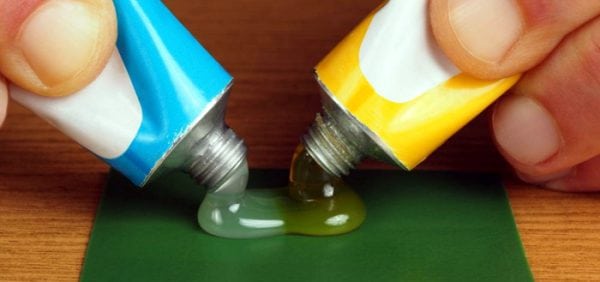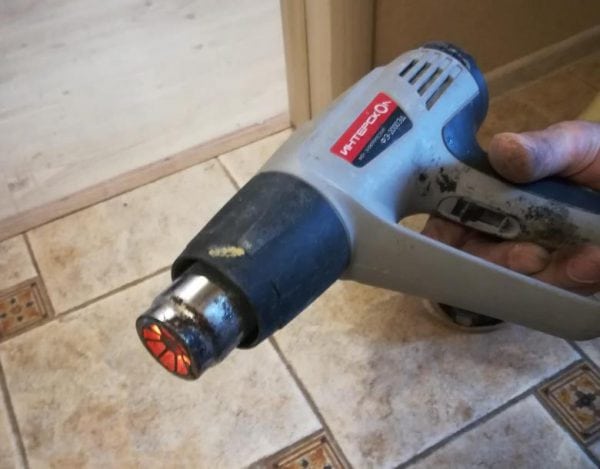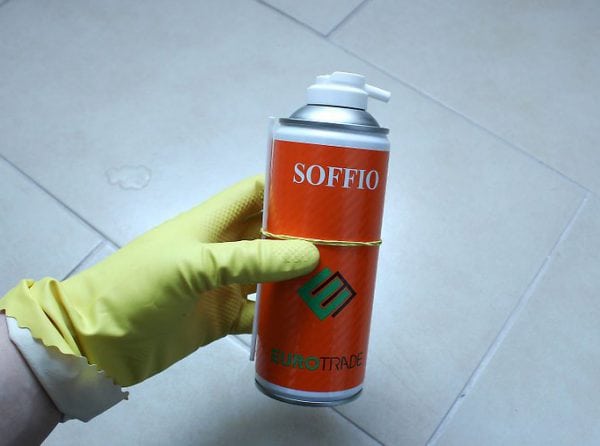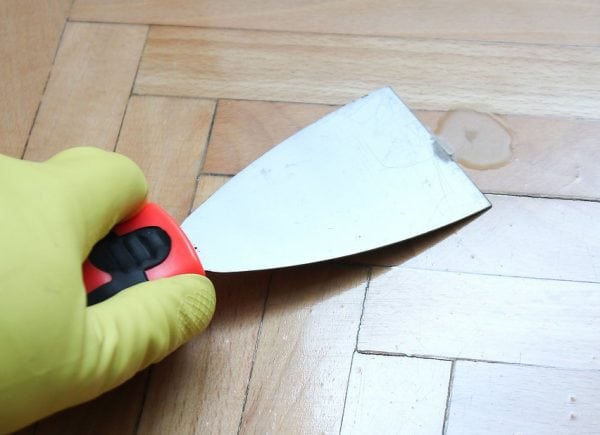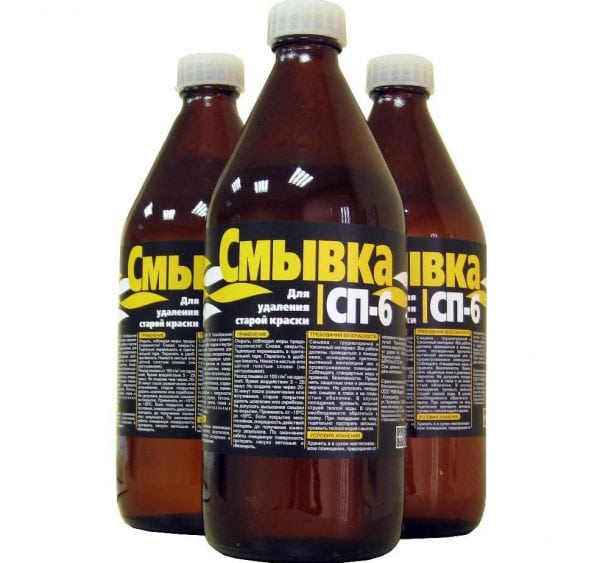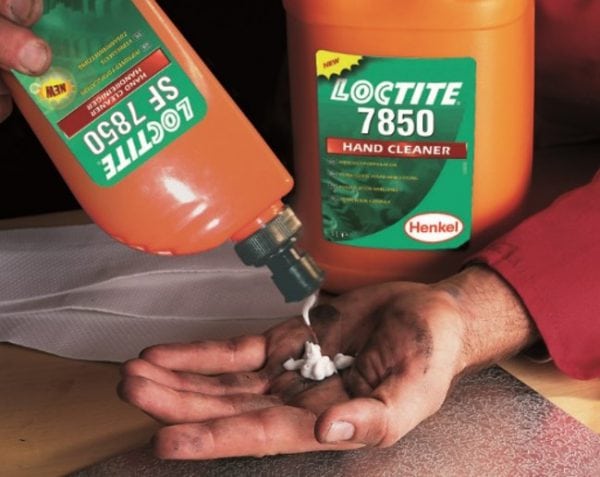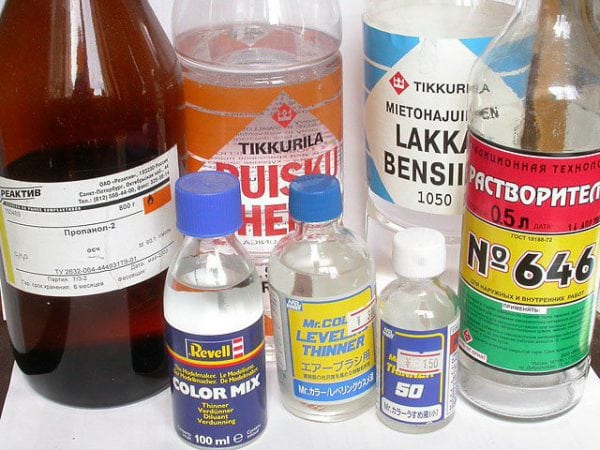During repairs, adhesives or other materials often fall on the surface of the house. It is not always possible to wash them immediately - some compounds are chemically resistant, they quickly eat into the base. It is especially difficult to get rid of epoxy stains - a durable, deeply penetrating agent. Before dissolving the epoxy resin, you need to assess the risk of damage to the base - sometimes it is worth using only the most gentle methods.
- Epoxy Features
- Basic stain cleaning methods
- Base heating
- Pollution freeze
- Mechanical removal
- Chemical solvents
- Skin Removal
- Laundering from clothes
- Tile and glass cleaning
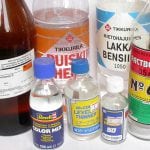
Epoxy Features
Epoxy is a substance with a complex structure, its chemical formula is represented by short polymer chains, which gives the composition special strength. Together with the hardener, the resin can be used as a casting compound - bulk floors, decorations, and figurines are made on its basis. Also, epoxy resin is part of the adhesive of the same name. Curing of any epoxy-based material occurs only after it contacts the hardener - a special solution that starts the polymerization process.
If the resin stain has been frozen, it will not be easy to remove. This is due to the properties of the material - moisture resistance, resistance to mechanical damage, scratching, heat resistance. It is much easier to dissolve or remove stains of glue based on the resin until the final polymerization has occurred. Then it will be easier to clean them, although traces on the surface can remain forever.
to contents ↑In order not to deal with the removal of defects, it is better to foresee all the necessary safety measures in advance. Surfaces near the work area should be covered with cellophane or newspapers. Gloves are put on hands - a chemical compound in contact with skin often causes allergies or burns.
Basic stain cleaning methods
The choice of the method by which it will be possible to remove epoxy at home depends on the size of the spot, the limitation of its appearance, and the delicacy of the base material. Sometimes it is better to remove the defect mechanically, in other situations it is worth using a solvent for epoxy resin. The basic principle of washing off the substance is to start the reverse process, when the hardened mass begins to liquefy again. This can be harmful to the surface, so less aggressive techniques are used with its value.
to contents ↑Base heating
During the polymerization reaction of the epoxy resin, excess heat is always generated. This is due to the characteristics of the chemical reaction: the combination of epoxy groups and hardener provokes heating of the mixture. This is the basis for the method of dissolving glue after returning to its original state of aggregation. The method is suitable to wash away the influx of resin from furniture, tile.
For heat treatment of the site, a building hair dryer is useful.The technique for removing solidified mass is as follows:
- wipe the surface of the area with acetone, white spirit or other diluent-degreaser;
- turn on the hair dryer, warm the stain to a temperature of more than 180-190 degrees (usually this is the limit of heat resistance of the epoxy);
- as you heat and liquefy the influx, you need to clean it, to facilitate the task, you can drop a little acetone inside the stain;
- it is better to wipe the defect with a soft cloth or sponge, if necessary, you can use a sharp knife;
- the residual material is heated again, repeat the procedure until the object becomes completely clean;
- usually the whole stain removal process takes no more than 3-5 minutes;
- if desired, instead of a hairdryer, you can use a soldering iron, they heat the resin through paper.
to contents ↑Boiling mass during heating is extremely undesirable. This can cause its rapid folding, after which the solubility will seriously decrease. Cleansing should be done in small areas, heating them sequentially. When cleaning wood, acetone must be used as a solvent, it will prevent cracking of the material from heating.
Pollution freeze
To implement this method of cleaning, you do not have to put the product in the freezer, especially since this is not always possible. A special refrigerant should be bought at the store; it is sold in departments for construction and repair. Work with this substance is allowed only with the use of personal protective equipment. Therefore, in parallel you need to buy glasses, a respirator, gloves. Without them, there is a risk of damage to the body by solid fragments.
The procedure for removing stains is as follows:
- open windows or turn on ventilation;
- remove children, pets from the premises;
- shake the refrigerant bottle thoroughly;
- Spray the product over the area of the resin that has solidified from a distance of 30 cm (keep the bottle with its neck up);
- after the stain has become brittle, it begins to crumble, it must be quickly wiped off, scored with a knife, a metal spatula. You can also smash it with a hammer and collect it with a broom, a vacuum cleaner;
- if necessary, spray the refrigerant again;
- epoxy fragments should be discarded immediately by packing in a sealed plastic bag.
Mechanical removal
This method is best suited if it is impossible to chemically wash off the resin, and thermal exposure can harm a delicate surface. In such a situation, you should take a sharp knife (for example, clerical), a razor, a thin iron spatula. This item carefully cleans the epoxy drips until the base material appears. It is necessary to cut off the stain in layers, so as not to accidentally damage the base. With a large pollution zone, you will have to be patient - the process will be time-consuming.
to contents ↑Chemical solvents
Epoxy resin is a soluble material, but not all solutions can wash it. A distinctive property of epoxy is chemical resistance, so you have to choose a really aggressive substance to soften the spots. On the composition, even when buying, you need to read whether it is suitable for the existing type of surface. Many solvents spoil the skin, leave stains on the stone, literally burn plastic. Particular care must be taken with expensive furniture, fabric coatings.
How to remove a stain without damaging the base? You can try acetone, a solvent for varnishes or enamels. First, a little money is dripped into the center of the influx, watching its reaction. If it begins to soften, then the epoxy can be completely washed off. Wipe areas of the resin with such means, while simultaneously cleaning the surface mechanically.
Work should only be done with a respirator, opening doors, windows.It is better to work in the fresh air, because the vapors of such liquids are very toxic. Immediately pour a lot of solvent onto plastic or wood, the material will probably be damaged.
What else can breed epoxy? Epoxy is highly soluble in methylene chloride, but it is so caustic and dangerous (carcinogen) that you should not risk your health. At home, craftsmen often try to wash off the resin with such substances:
- nail polish remover;
- denatured alcohol;
- sulfuric acid;
- washing with SP-6;
- DMF, DMSO.
Skin Removal
It happens that epoxy glue gets on the skin of hands or other areas, especially often this happens when working without gloves. If you do not respond in time, there is a risk of a chemical burn or contact dermatitis. You need to do the following:
- Wash skin immediately with soap;
- rinse the stain area with a disinfectant, if any;
- Wipe thoroughly with a soft towel or paper towel.
It is also allowed to remove the stain from the hand with acetone, but people with sensitive skin should not do this. You can wipe with acetone or nail polish remover only the area where the resin enters, but not the entire hand, otherwise cracks may appear on the skin. After washing your hands with soap, rub any nutritious cream. If the contamination has solidified and gone unnoticed, it is impregnated with any vegetable oil until it is completely peeled off.
to contents ↑Laundering from clothes
After the composition gets on the fabric, the spots are absorbed very quickly, they harden no less quickly. Aggressive practices can destroy the fibers, so cleaning will lead to permanent damage to things. But smudges of small resin can be cleaned in this way:
- A solution of ammonia 10% or ethyl alcohol. Moisten the stain, after a couple of minutes clean it with the corner of a spatula.
- Freezing. Put the bag with the thing in the freezer for a couple of hours, after scrubbing the epoxy.
- Heating. Apply white paper to the epoxy stain, iron with an iron until the composition melts. Remove it with any suitable device.
There are more exotic stain removal methods. So, the resin can dissolve from the action of soda Pepsi or Coca-Cola, after which it can be removed from the fabric. You can also lubricate the stains with the Dimexid pharmacy drug. It is mixed with water 1: 3, the thing is moistened, the stain is removed. After applying any method, you need to wash the product in a machine with ordinary washing powder.
to contents ↑
Tile and glass cleaning
If after finishing work in the bathroom on the walls or on the floor there are unsightly influxes, it will not be difficult to remove them. Fresh stains are cleaned with a simple wipe with a damp cloth and soapy water. Frozen defects are eliminated by heating, freezing with a refrigerant, chemical solvents. Tiles are practically not subject to damage from such methods of exposure, so you can always get rid of the problem.

